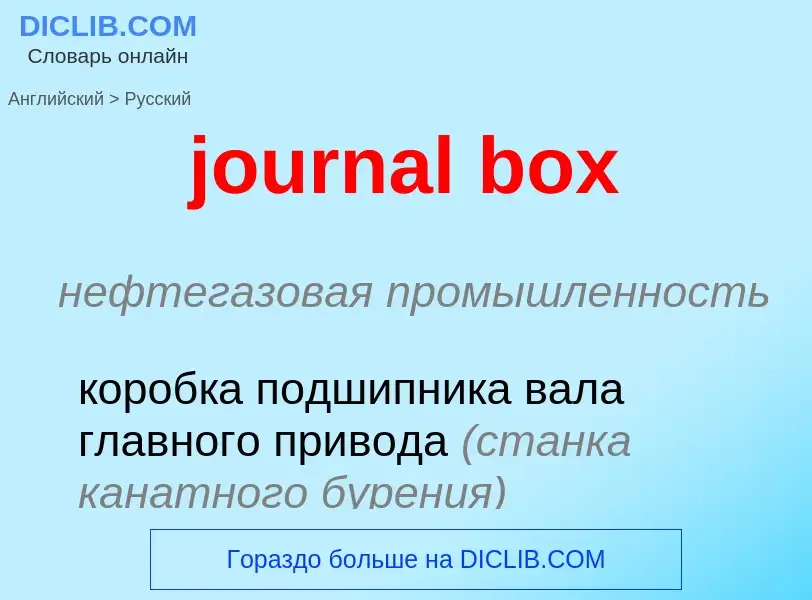Перевод и анализ слов искусственным интеллектом ChatGPT
На этой странице Вы можете получить подробный анализ слова или словосочетания, произведенный с помощью лучшей на сегодняшний день технологии искусственного интеллекта:
- как употребляется слово
- частота употребления
- используется оно чаще в устной или письменной речи
- варианты перевода слова
- примеры употребления (несколько фраз с переводом)
- этимология
journal box - перевод на русский
нефтегазовая промышленность
коробка подшипника вала главного привода (станка канатного бурения)
общая лексика
тормозной такелаж
[ilek'trɔnikdʒə:n(ə)l]
общая лексика
«электронный» журнал (подготавливаемый на всех стадиях и печатаемый с помощью ЭВМ)
бухгалтерский учет
главный [общий] журнал (предназначен для учета всех тех операций, которые не вошли ни в один из специальных журналов (напр., для записи корректирующих или закрывающих проводок))
Смотрите также
Википедия
The Box–Muller transform, by George Edward Pelham Box and Mervin Edgar Muller, is a random number sampling method for generating pairs of independent, standard, normally distributed (zero expectation, unit variance) random numbers, given a source of uniformly distributed random numbers. The method was in fact first mentioned explicitly by Raymond E. A. C. Paley and Norbert Wiener in 1934.
The Box–Muller transform is commonly expressed in two forms. The basic form as given by Box and Muller takes two samples from the uniform distribution on the interval [0, 1] and maps them to two standard, normally distributed samples. The polar form takes two samples from a different interval, [−1, +1], and maps them to two normally distributed samples without the use of sine or cosine functions.
The Box–Muller transform was developed as a more computationally efficient alternative to the inverse transform sampling method. The ziggurat algorithm gives a more efficient method for scalar processors (e.g. old CPUs), while the Box–Muller transform is superior for processors with vector units (e.g. GPUs or modern CPUs).



![wheelset]]''. wheelset]]''.](https://commons.wikimedia.org/wiki/Special:FilePath/Rollingstock axle.jpg ?width=200)
![side frames]], at the wheels side frames]], at the wheels](https://commons.wikimedia.org/wiki/Special:FilePath/Seitenkipper-Ua4201-Drehgestell.jpg ?width=200)

![Diamond frame bogie, [[elliptical spring]]s and American style [[journal box]]es Diamond frame bogie, [[elliptical spring]]s and American style [[journal box]]es](https://commons.wikimedia.org/wiki/Special:FilePath/Diamond Frame bogie (elliptical).jpg?width=200)
![articulated]] [[well car]]. The [[roller bearing]]s are not enclosed by an axle box. articulated]] [[well car]]. The [[roller bearing]]s are not enclosed by an axle box.](https://commons.wikimedia.org/wiki/Special:FilePath/JacobsBogieArticulatedWellCarCanadianPacificTrainBoltonON.jpg?width=200)


